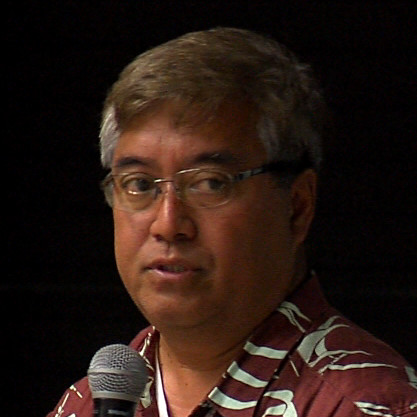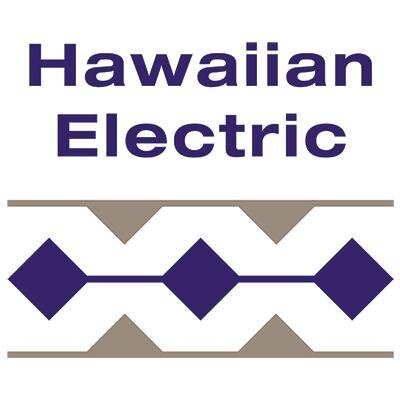Video by David Corrigan, filmed October 1, 2015 in Waimea, Hawaii.
WAIMEA, Hawaii – The Hawaiian Electric Companies have met an October 1 deadline to file a state-mandated community-based renewable energy tariff, and already the utility’s proposal is getting criticized.
Jose Dizon, a former Hawaiian Electric Co. executive who now serves as general manager for the Parker Ranch subsidiary Paniolo Power Company, said during Thursday’s Waimea Community Association meeting that there will probably be a “protest to this tariff in the form of a docket.”
On June 8, Governor David Ige signed into law Senate Bill 1050, establishing a community-based renewable energy program. At the time, the administration reasoned that the act will “help democratize renewable energy by creating a structure that will allow renters, condominium owners and others who have been largely shut out of Hawai‘i’s clean energy transformation, to purchase electricity generated at an off-site renewable energy facility, such as a large-scale solar farm.”
But Hawaiian Electric’s plan does not provide enough of a benefit, Dizon says.
Dizon was on the utility’s tariff development committee and was trying to help the utility develop a proposal that would be simple to understand as well as “simple for the Commission to approve so that this tariff could be approved quickly, so that everyone can benefit as quickly as possible.” But Dizon was not happy with the finished product.

“Honestly, it doesn’t look simple. They’re only going to allow one megawatt of solar and 2 megawatts of wind to be available for the community renewable program and that’s for the whole island. The whole island! So that’s really not a lot. You can’t really get a lot of benefit there.”Jose Dizon on Oct. 1, 2015
Here is the media release that was issued by Hawaiian Electric on Thursday evening:

The Hawaiian Electric Companies today proposed a Community-Based Renewable Energy program and tariff to the Hawai‘i Public Utilities Commission that would allow customers who cannot or chose not to take advantage of rooftop solar to receive the benefits of renewable energy to help offset their monthly electric bills and support clean energy for Hawai‘i.
Until now, only customers who own a suitably sized and located residential or commercial roof have been able to take advantage of distributed solar generation. More than 40 percent of Hawai’i households rent their homes and 37 percent live in multi-unit dwellings making it difficult or impossible for them to benefit from rooftop solar. If approved, this program will allow Hawai’i residents and Hawai’i-based businesses and organizations with an electric utility account to receive the benefits of renewable energy.
At present, individually owned rooftop solar systems comprise almost all customer-based renewable energy. This program is designed to allow a variety of sizes and kinds of projects — including wind — to give customers and developers many ways to participate. Projects will be considered in different-sized tiers to allow both small and large community renewable projects to participate.
If the proposed program is accepted, the first small solar projects under one megawatt will be qualified on a “first-ready” basis. Community-based solar projects greater than one megawatt or community-based wind projects will be selected through a competitive process. This is intended to provide fairness and ensure the lowest cost of electricity for all customers and the lowest upfront and ongoing costs for community-based renewable participants.
In asking the PUC to approve the program, the Hawaiian Electric Companies hope to start with selection of developers for new community-based renewable energy projects in 2016. Only after projects are selected, approved and built will customers have the opportunity to participate. The community renewable energy program will be available on all islands the Hawaiian Electric Companies serve, once developers undertake community projects on those islands.
“Expanding options is part of our efforts to deliver value for our customers,” said Shelee Kimura, Hawaiian Electric vice president for corporate planning and business development. “Encouraging more customer participation in renewable energy supports our vision to integrate more low-cost renewables that benefit all of our customers and to lower customer bills by 20 percent by 2030 as we work to achieve 100 percent renewable energy by 2045.”
The program, once approved, will allow customers to buy an interest in electricity generated by community renewable projects in diverse locations on their home islands without installing anything on their own roofs or property. These community-based projects will be able to provide cost-effective renewable energy for all customers and help support their island grid to deliver reliable service. The goal is that all customers share in the benefits of low-cost power while not placing an undue cost burden on those who do not participate. As proposed:
– Community-based renewable energy projects may be developed independently or by the utility to serve the entire electric system in the most cost-effective manner. As with all utility-scale generation, electricity from community projects will be provided via the grid for all customers at low cost.
– The Hawaiian Electric Companies will provide lists of community projects on each island for potential participants to choose from.
– Customers who participate will purchase an interest in the electricity generated directly from the project developer. They will receive credits on their monthly electric bill to offset their use in proportion to their interest without installing renewable energy resources on their property.
– The program will be a “pass through,” with all benefits going to the developers and/or program participants. The Hawaiian Electric Companies will only recover the actual cost to administer the program on behalf of all projects and participants.
The Hawaiian Electric Companies developed the proposal in collaboration with the stakeholders from the renewable energy industry; environment advocacy organizations; the Energy Office of the Department of Business, Economic Development and Tourism; and organizations representing customers who may benefit from such a program.
A series of meetings and other exchanges provided an opportunity for suggestions and questions and while agreement was not reached on all issues, the dialogue did contribute to changes and compromises to the proposal the Hawaiian Electric Companies are submitting today.
The filing complies with Act 100 called for filing of a community-based renewable energy tariff by October 1, 2015 that was passed in the last legislative session and signed into law by Governor David Ige.Hawaiian Electric on Oct. 1, 2015

by Big Island Video News8:40 am
on at
STORY SUMMARY
WAIMEA: Jose Dizon, a former Hawaiian Electric Co. executive who now serves as general manager for the Parker Ranch subsidiary Paniolo Power Company, says there will probably be a "protest to this tariff in the form of a docket."